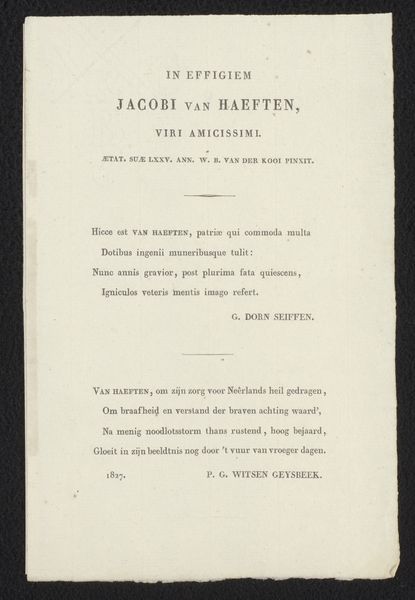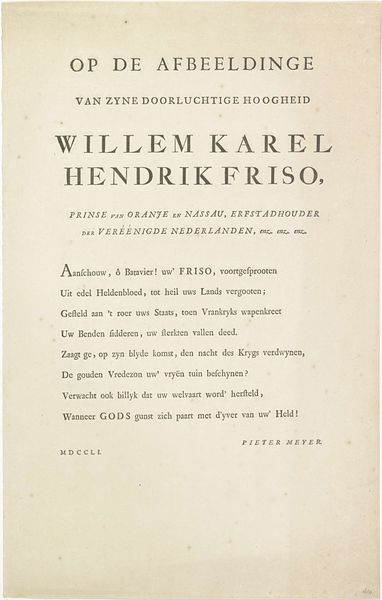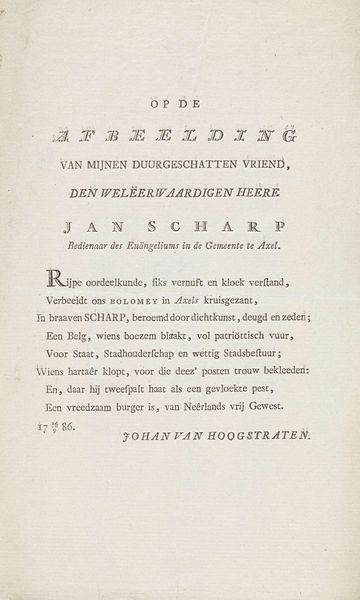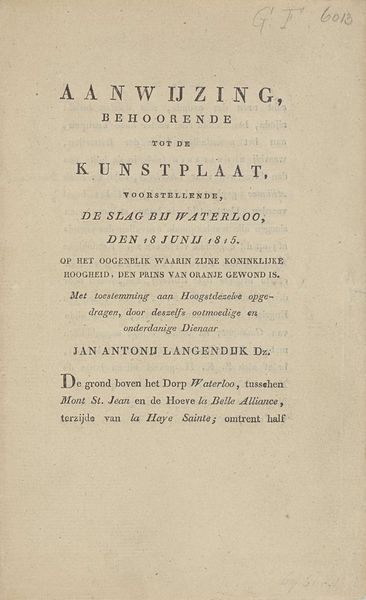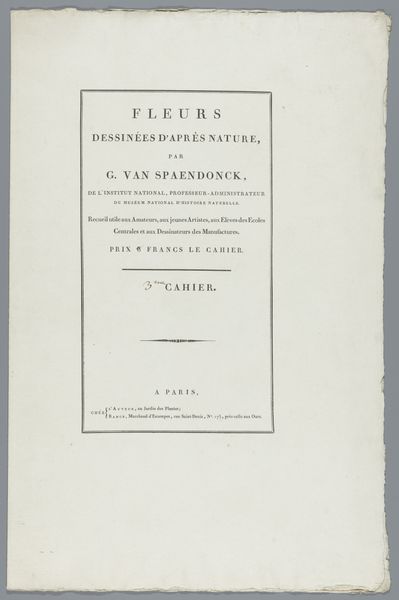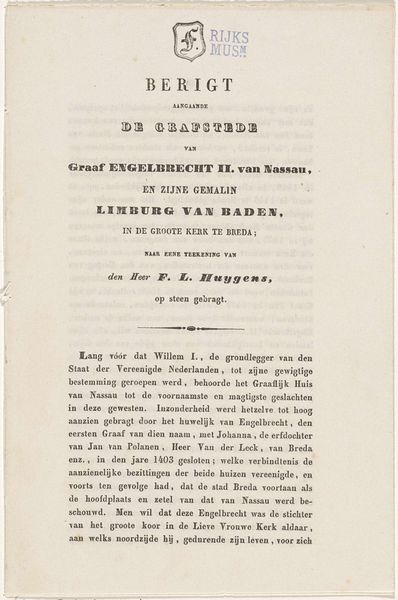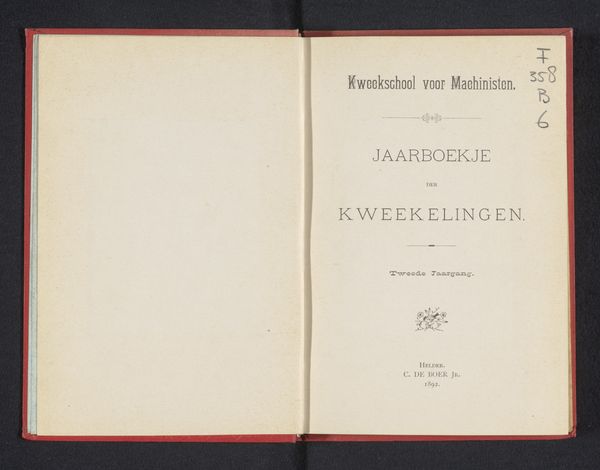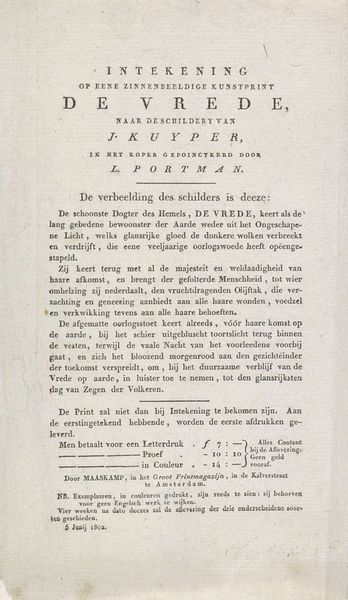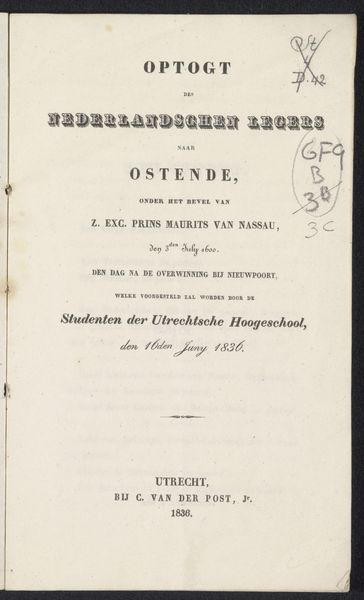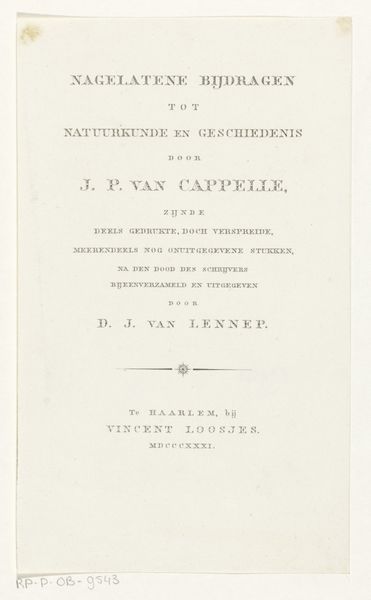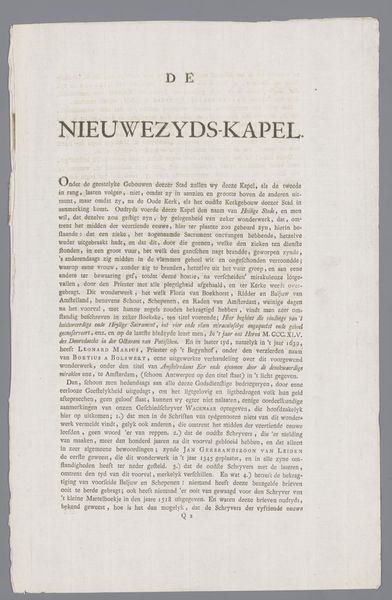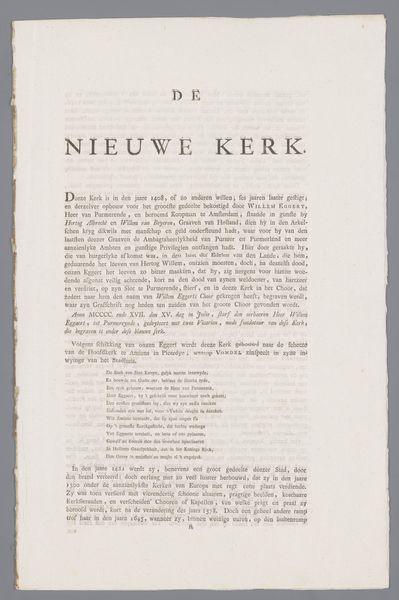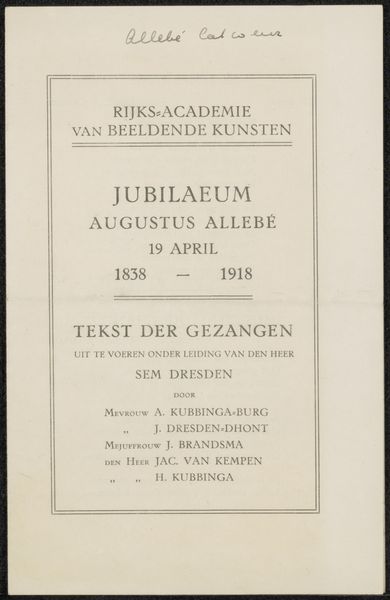
print, paper, typography
#
portrait
#
neoclacissism
# print
#
paper
#
typography
#
academic-art
Copyright: Rijks Museum: Open Domain
Curator: Here we have “Rouwgedicht over Jacques Kuyper,” or “Elegy on Jacques Kuyper,” likely from 1808, by A. Koning. It's a print, using typography on paper. Editor: The text immediately evokes a solemn, almost melancholic mood. The orderly layout of the text, paradoxically, adds a touch of elegance amidst what appears to be a lament. Curator: Yes, the neoclassical style lends a sense of formality even to grief. We must consider the socio-political context of the Netherlands in the early 19th century. This was a period of great upheaval, shifting national identities. The elegy for Kuyper exists, in part, to legitimize hierarchies, reflecting and refracting anxieties through highly symbolic representations. Editor: I notice the specific choice of fonts and the clear, balanced lines—a visual embodiment of rational mourning, perhaps? Death is the ultimate leveler, yet even in grief, social structures are visibly reinforced. Look at how “KUYPER” is prominently displayed, reminding the reader of the deceased's societal rank. Curator: Exactly. Note also that nature and art are intertwined in this elegy. The very first line casts nature as troubled, since art, embodied by Jacques Kuyper, was celebrated. This sets up the piece's main tension. We're dealing with complex questions of legacy and influence within the social framework. Editor: The phrase "De tedre vrindfchap kwynt," or "Tender friendship wanes," really stands out to me, alongside "De fchors van uwen vrind is flechts in 't flof begraven," translated as "The bark of your friend is only buried in glory" - that’s incredibly rich with symbols. The notion of grief gradually diminishing is tempered by the simultaneous memorialization of his “bark.” Curator: The imagery serves a distinct purpose. Koning wasn't simply expressing personal grief; he was actively participating in constructing a narrative around Kuyper’s death, thus reflecting broader social ideals. Editor: In viewing such works we aren't merely looking at artifacts, but considering the sustained resonance of certain forms of expression within cultural memory. Curator: Precisely. And through the critical lenses of intersectionality, we can expose how deeply entangled aesthetics, social standing, and power really are.
Comments
No comments
Be the first to comment and join the conversation on the ultimate creative platform.
